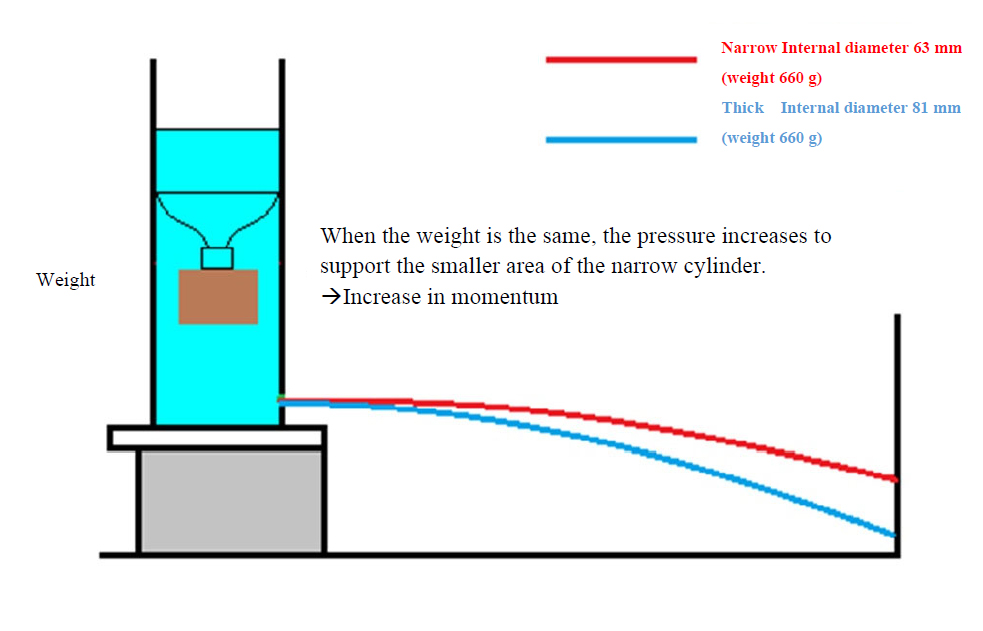Narrow and thick Wide cylinders
Let's take a look!
What type of experiment is this?

Experimental procedure and explanation:
- We conduct the "Pistons and Cylinders " experiment using a large measuring cylinder. In "Piston and Cylinder, " the inner diameter (inside diameter) was 63 mm; in this experiment, the inner diameter was 81 mm.
- The weight is created using the head of a plastic bottle. In this case, we experimented with weights of two different weights, one approximately 330 g and the other approximately 660 g.
- We allow the water to drain out and then add a weight. This will result in an increase in the water pressure (if you observe closely, you may notice that it is not as strong as that with a thin measuring cylinder).
- The heavier the weight, the greater the pressure of the outflow.
- Finally, we compare the results with those of a narrow cylinder. For the same weight, the narrower cylinder possesses a stronger momentum, and the wider cylinder possesses a weaker momentum. Although the wider cylinder appears to be more powerful, the result is actually the opposite.
- The increase in pressure is obtained by (magnitude of gravity)/(area) (which is then weakened by the frictional force between the cylinder and the piston). Therefore, with the increase in the diameter of the cylinder, the pressure becomes smaller and less vigorous.
- [Tip for making it] The cut circle of the plastic bottle should not be too large or too small. It is important to cut it carefully to ensure that it fits the diameter of the cylinder.
- This experimental video was produced with the support of JSPS Grant-in-Aid for Scientific Research 18K03956.
| [Keywords] | Pressure, outflow velocity |
| [Related items] | Piston and cylinder, The Height of Water and Its Energy, Water Fountain 2 (Using Pressure) |
| [Reference] | Ryozo Ishiwata and Mitsumasa Nemoto, "The Wonder of Flow", Kodansha Blue Backs, P34-37, P98-101 Ryozo Ishiwata, "Illustrated Fluid Dynamics Trivia", Natsume Publishing, P14-15, P102-193 |
Last Update:1.31.2025

